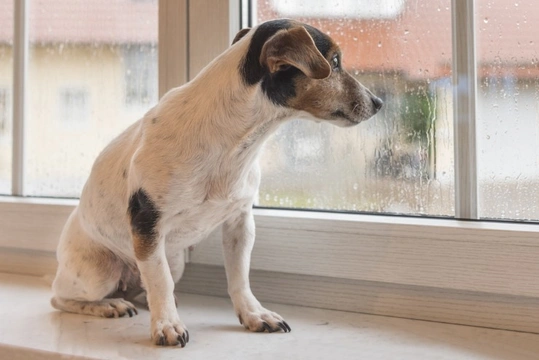
Watchdog or guard dog?
Whatever breed or type of dog you own, the chances are that once they get established in your home and with you as a family, they will start to exhibit some territorial traits in terms of defending their home and family or alerting you if someone approaches.
Dogs are by design relatively territorial animals, and any dog from the smallest Chihuahua upwards will tend to take their roles very seriously! This is not something that needs to be taught to them, nor a skill that needs to be honed; it is a behaviour that most dogs will display, to some extent, totally naturally.
However, some dogs most certainly make for better guard dogs or watch dogs than others, and this is due to a combination of the breed’s traits, and the way that they are trained or managed. That said, the skills and traits shown by a watchdog are significantly different than that displayed by a guard dog, which is something that not everyone fully appreciates!
As part of the process of researching the breed that you own or are considering buying, it is important to find out which side of the line your own dog may lie on. This is important because understanding your breed properly is the key to managing them, and ensuring that their guarding or watchdog traits do not get out of control, and if you wish, can actually be put to work in your favour.
In this article we will look at the difference between a watchdog and a guard dog and their core traits and behaviours in more detail, and how to identify such traits in your own dog. Read on to learn more.
Watchdogs and guard dogs
Watchdogs and guard dogs share a variety of traits in common, which largely consists of establishing in their own minds what constitutes their territory-usually this will be their home and garden-and keeping a lookout for any perceived threats to it. What your dog counts as a threat, however, is highly unlikely to be a true one-the mail man, visitors and even people simply walking past a little bit too close to your fence may all be seen as fair game to your dog!
The core difference between a guard dog and a watchdog is how the dog in question reacts to a person approaching their territory. A watch dog will see it as their role to warn you of the approach of the stranger, usually by barking and making a lot of fuss, and potentially, by getting excited and coming up to you and physically trying to get your attention and point you in the direction of the “problem.”
A guard dog, on the other hand, will be concerned with trying to actively see off the potential intruder, attempting to intimidate them into backing off to what your dog sees as a safe distance. If the person that your dog is defending their territory against attempts to enter their property without the dog’s owner present to control the dog, a guard dog will usually use their body language and physical presence to prevent said person from entering, which may go as far as growling, snapping, or even biting the person in question.
Guard dogs also tend to be quite protective of their family too, and will need to be introduced to visitors and people that come into the home in order to feel comfortable with them. If the dog is present when their owner gets into any kind of altercation with another person-or even if the dog perceives someone as a threat-they are also apt to physically intervene and get between their owner and the other person and defend them, once again, possibly biting or attacking.
Both dogs displaying watchdog traits and those displaying guarding traits can of course be trained to either be calmer and less reactive, or to become more reactive and respond in a certain way to strangers. The most highly trained working and guarding dogs will react in the way that they are trained to, even if a handler is not present.
For guarding dogs, this may mean that if a person enters their territory they will get between them and the home and physically try to keep them away, and/or that they might say, be taught to catch a person’s arm in their teeth firmly enough to stop them but not to deliver a bite.
The breed of the dog too may well affect both their natural tendency to guard or watch, and how well they can be trained to respond in a certain way-very intelligent guarding breeds like the German shepherd or Doberman pinscher are usually highly trainable. However, some other very defensive guarding breeds like the bulldog, which do not rank well in terms of canine intelligence, can be a lot harder to train.
Identifying your own dog’s traits
If your dog is a specific breed, researching the breed itself will usually tell you definitively if they are a watchdog or guarding breed, or if they share a combination of both traits, which is common among livestock working dogs.
However, if your dog is a mixed breed or from a breed that is not notable for either watchdog or guarding roles, you will have to assess their behaviour and reactions to determine what is going on in your dog’s head.
If your dog is the type to go mad at the sound of the doorbell or bark a lot when people walk past, but that is safe around strangers that do come in, usually barking and making a fuss but not showing any aggression, the chances are that they have watchdog traits.
However, if your dog tries to defend or prevent someone from stepping onto their territory, particularly to the point that you have had to secure your property to ensure that no one can come into contact with your dog without you there, you are probably looking at a guard dog.



